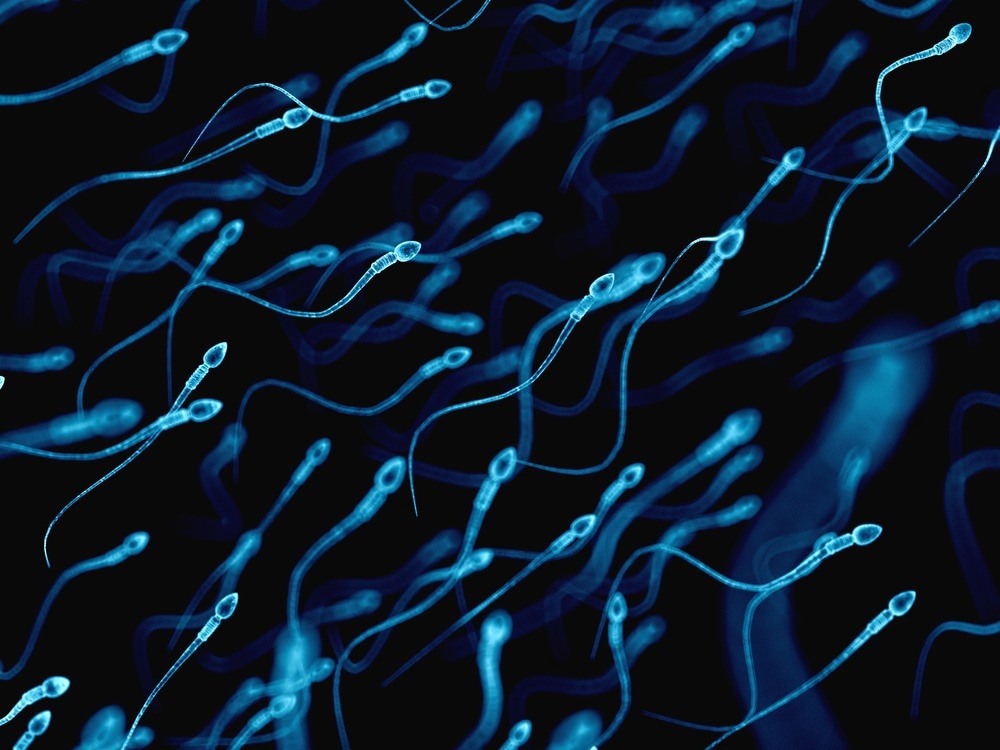The rates of infertility continue to rise worldwide and are currently estimated to affect up to 170 million people. Male factors contribute to at least half of infertility cases, including hormonal abnormalities, problems with sperm transport or entry into the uterine tubes, impaired sperm production, and male reproductive tract infections (MRTIs)
MRTIs are responsible for about 10% of male infertility cases. A new Pathogens study discusses the impact of Escherichia coli (E. coli) infection on sperm parameters.

Study: Impact of Escherichia coli Outer Membrane Vesicles on Sperm Function. Image Credit: SciePro / Shutterstock.com
Introduction
Most MRTIs are caused by bacteria including Staphylococcus epidermidis, Streptococcus viridans, Staphylococcus aureus, Enterococcus faecalis, and E. coli. In fact, E. coli accounts for 65-80% of bacterial prostatitis, mostly from serotypes O1, O2, O4, and O6.
E. coli adversely affects the functions of sperm that are essential for fertilization of the ovum to form a zygote. This can include reduced sperm motility as the gametes agglutinate following contact with the sugar residues on the cell surface of these bacteria, mainly on types 1 and P fimbria.
With type P fimbria, exposed galactosyl residues found over the whole of the sperm cause head-to-tail agglutination. Comparatively, on type 1 fimbria, the heads of adjacent sperms attach through mannose residues on the surface of this sperm component.
Another cause of sperm immobilization or reduced motility is decreased mitochondrial membrane potential when they counter bacteria. The outcome of these interactions is damage to the sperm head, impaired acrosome integrity, disruption of the acrosome reaction, and cell death. Furthermore, a rise in reactive oxygen species (ROS) like superoxide ions will also cause damage to lipid membranes and genetic material.
The current study examines the effects following exposure of sperm to outer membrane vesicles (OMVs) in E. coli. OMVs are spherical structures with nanoscale diameters and are bounded by lipid bilayers including lipopolysaccharide, phospholipids, and proteins found in the outer membranes.
OMVs also contain material from the cytoplasm and adjacent cellular areas, such as genetic material, in addition to virulence factors such as invasion proteins, evasion proteins, and bacterial toxins.
OMVs participate in protective functions, such as obtaining nutrients and forming insulating biofilms to evade and resist immune attack, as well as transfer genes, while also helping the pathogen to achieve host entry and infection. These vesicles also deliver toxins, adhesins, and immunomodulators to the host cell.
Taken together, the researchers of the current study determined the mechanisms by which exposure to OMVs would affect sperm function in vitro. These findings are expected to assist in the development of effective counter-strategies to minimize MRTI damage.
Study findings
OMVs with a mean diameter of approximately 100 nm were obtained from E. coli cultures and purified. OMVs were subsequently added to purified sperm for periods of time varying from 30 to 90 minutes. The effects on sperm motility, viability, and form were then evaluated.
The viable percentage and morphology of sperm did not vary; however, motility was normal in only half of exposed sperm as compared to 65% in controls, with the remaining sperm being immotile. Sperm function declined after exposure to OMVs for 45 minutes.
After an hour, sperm motility decreased by over 10%, while at 1.5 hours, the motile and immotile sperm percentages were about 40% and 60%, respectively. Conversely, motility remained at 60% in controls at this time point.
OMV exposure also caused ROS to form and accumulate within the sperm’s neck region over time, with the first significant elevation reaching 18% after 45 minutes. At one hour and 90 minutes, ROS levels were almost 40% higher, which was about twice that of the control group and equivalent to that in benzene-treated sperm.
Sperm DNA damage also occurred and increased with time of treatment. Beginning with damage in over a quarter of sperm at 45 minutes and a DNA fragmentation index (DFI) of 27%, DNA damage subsequently exceeded that of the positive control sperm by 15% at one hour and ultimately peaked at 1.5 hours. At this point, almost 40% of OMV-exposed sperms exhibited DNA fragmentation, which was double the proportion of untreated sperms.
Implications
The study findings indicate that OMVs, which are produced by many pathogenic bacteria like E. coli, have a significant role in the disease process by mediating bacterial virulence. Herein, the effects of OMVs on human sperm are reported for the first time and appear to reduce sperm function as a result of impaired motility and DNA damage.
Interestingly, no alterations were described for sperm morphology or viability. Morphological changes might have been masked by the surface binding of OMVs, as these vesicles bind to surface receptors to activate signaling pathways.
Other researchers have observed apoptosis of sperm to occur one hour following exposure to E. coli. However, this is not necessarily contradictory, as the current study may have used too low a concentration of OMVs for too short an exposure time to cause observable sperm death.
The accumulation of ROS is associated with rapid oxidative stress and causes membrane lipid peroxidation of the sperm. Sperm motility is subsequently reduced through several mechanisms including loss of flexibility of the sperm, disruption of the cellular processes that contribute to motility, and mitochondrial damage as a result of ROS-linked reduction in adenosine triphosphate (ATP), which provides energy for motility.
DNA damage also occurred as a result of OMV exposure and was likely due to ROS, which cause strand breaks, cross-linkages, and chromosomal rearrangements to occur. ROS-associated apoptotic processes could also contribute to this outcome.
Further research will provide a more detailed description of the pathogenesis of sperm injury due to OMVs.
Journal reference:
- Folliero, V., Santonastaso, M., Dell’Annunziata, F., et al. (2022). Impact of Escherichia coli Outer Membrane Vesicles on Sperm Function. Pathogens. doi:10.3390/pathogens11070782.